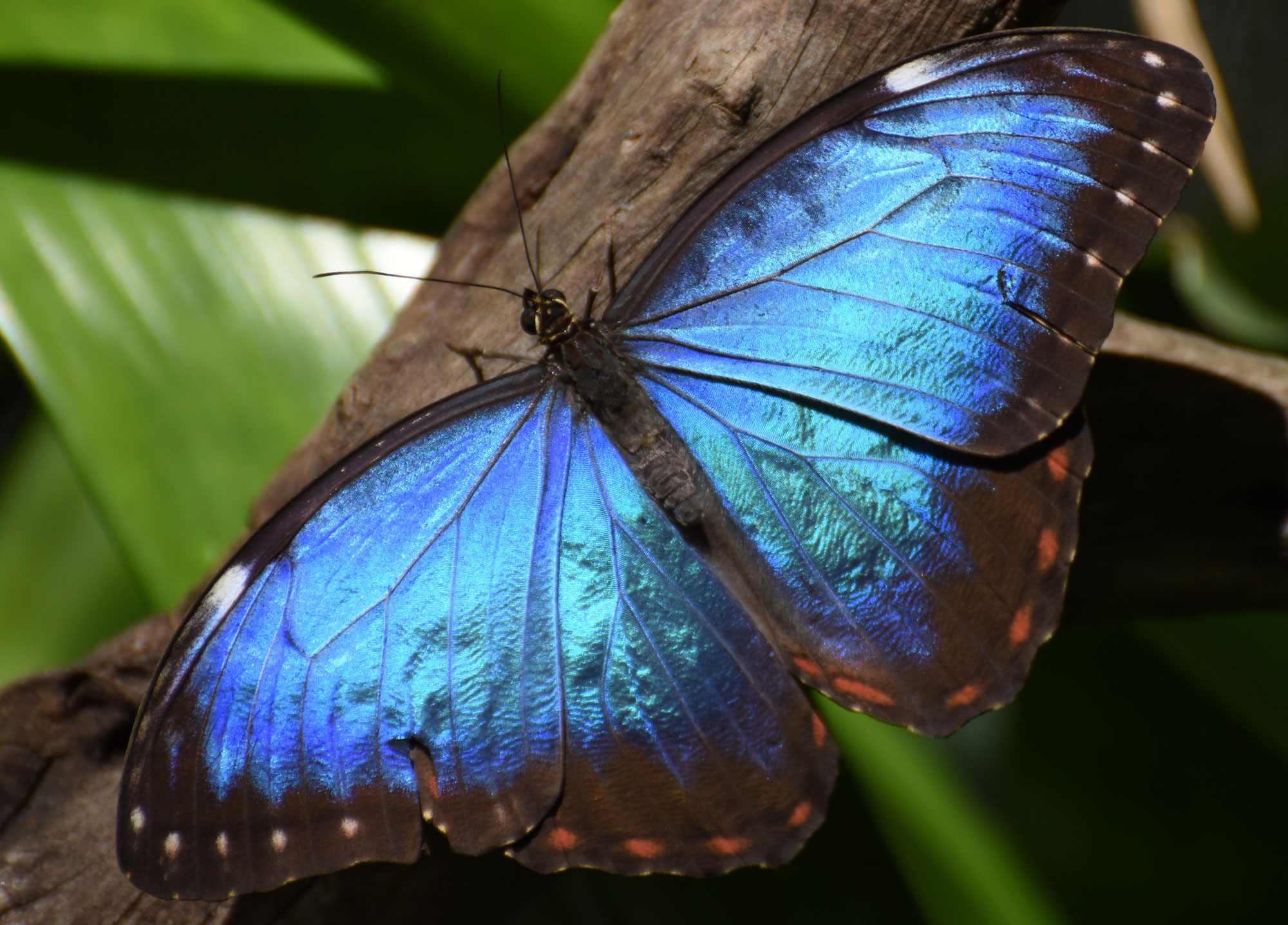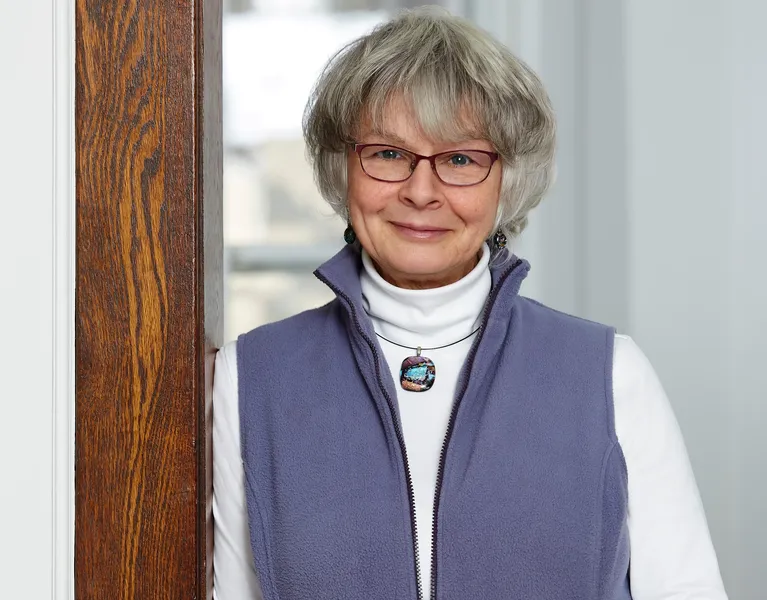Join Kat Sitnikova in an enlightening conversation with Dorna Schroeter, a biomimicry educator and long-time supporter and friend of the Biomimicry Institute. This interview delves into Dorna’s journey, from coordinating the Putnam Northern Westchester BOCES Center for Environmental Education to introducing biomimicry in retirement at the Omega Institute Center for Sustainable Living. With her extensive background in environmental education, Dorna shares how Biomimicry: Innovation Inspired by Nature by Janine Benyus ignited her passion for biomimicry, leading her to develop innovative educational programs and inspire a new generation of eco-conscious thinkers.
Delve into Dorna’s inspiring story, her strategies for engaging students in biomimicry, and the transformative impact of this approach in the classroom.
Kat: Could you share with us a bit about your background and what led you to become deeply involved in biomimicry education and the Biomimicry Institute?
Dorna: I retired five years ago, but before that, I coordinated the Putnam Northern Westchester BOCES Center for Environmental Education for 38 years. We offered 70 different programs at our nature center and in schools. My interest in biomimicry sparked when I read Janine Benyus’s book in the late ’90s. It was solution-based and changed my view of how I taught about the natural world. Instead of seeing nature as a warehouse for human use, biomimicry taught me to view it as an encyclopedia of information.
After reading the book, I attended a conference where Janine spoke, which inspired me to create a teacher training program in biomimicry, despite the lack of existing curriculum. It took some years, but eventually, teachers who were passionate about sustainability and environmental education began to sign up. I also developed an in-school biomimicry program, which initially took time to gain traction, but then became very popular.
My work evolved as biomimicry became more known. I couldn’t attend many Biomimicry Institute trainings due to my job but participated in summits and worked with the Biomimicry Institute. I learned a lot from biomimicry designers, especially those who integrated arts and engineering in education.
One of my initiatives was a mini design challenge for students, where they first learned about biomimicry then became designers. Now, in retirement, I work with a local environmental center, introducing biomimicry to students and training teachers as well as the nature center staff. We focus on structure and function in ecosystems and conclude with the mini design challenge centered on water-related issues.
I’ve also worked with school districts, like the Hyde Park School District, where for the past 3 years, their 260 sixth grade students all participate in a 3-part program that culminates in the mini design challenge. Even the district’s leadership team participated in this program as part of one of their summer retreats and they get excited and involved every year. These experiences are incredibly inspiring and watching the creativity and design thinking in students, I believe these programs plant seeds for future innovators.

Kat: What are some of what are some effective ways you found to integrate biomimicry concepts into these student programs?
Dorna: In my Intro to Biomimicry programs, I use attention-grabbing methods like showing a Morpho butterfly and a $100 bill to explain structural color. I use relatable products like Velcro, inspired by burdock seeds, to introduce biomimicry concepts. Interactive games and matching exercises help students think differently. I also bring Bioinspired product samples, like the Pangolin backpack and a Lotus-inspired paint sample, to demonstrate sustainable design and biomimicry principles. These hands-on experiences are impactful, helping students see possibilities and think as problem-solvers.
Kat: It sounds like interactive experiences are crucial for engaging students.
Dorna: Absolutely. One of my proudest moments was co-coaching a team of students who won the middle school design competition in 2018. The award monies were used to create a “biomimicry kit” for our local library, so other libraries and teachers can check it out to introduce biomimicry to their constituents.

Kat: I’m really curious about how the Biomimicry Institute’s resources have helped you in your educational programs.
Dorna: They’ve been a huge help! I’ve leaned on their resources a lot, especially when I couldn’t make it to their training sessions. The organism cards from EcoRise and the Institute were a game-changer for my mini design challenges. And the Youth Design Challenge curriculum is packed with great stuff – lesson plans, resources, slides, you name it. It’s a goldmine for teachers who really want to dive deep into biomimicry.
The resource bundles on AskNature provide really easy-to-understand stories about organisms, illustrations, great videos, and lesson plans. The AskNature website in general is a black hole! I always tell teachers and students: give yourself time to explore it because you’ll get on it and go exploring for hours and lose track of time. It really is a unique, great resource. In one of my school programs, after I introduced the mini design challenge one of the students, who had obviously spent time exploring AskNature on his own, asked if his group could use organisms he found on AskNature instead of using the organism cards I had given them! That made me very happy!
Kat: What about the Youth Design Challenge? Any standout projects you’ve seen?
Dorna: Being a judge for the Biomimicry Institute’s Youth Design Challenge is such an inspiration. I am awed by the ideas young people come up with and there have been some amazing ones. Like this high school team that came up with ‘Morpho Bricks’ for building insulation, inspired by the Morpho butterfly. And another group created frost-resistant wind turbines, taking cues from mint and lotus leaves. There was even this brilliant idea from a student in my own mini design challenge program about helping thirsty dogs in Ukraine – simple, yet so impactful.

Kat: That’s incredible. Do you see a change in students after they’ve been through biomimicry education?
Dorna: Absolutely. Some start off a bit indifferent, but as we get into it, you can see their interest spark. They begin to see problems as opportunities for creative solutions. I had this one student whose grandfather with Alzheimer’s was walking away from home and getting lost, so she gave me a drawing of “slug slippers” she designed that leave a trail so he can find his way back home – all from just an hour of learning about biomimicry! I’ve had many students come up and thank me after class, and even write me notes thanking me for teaching them about biomimicry.
Kat: And your children’s books on biomimicry – can you share a bit about them?
Dorna: Sure! I’ve written two – ‘The Story of Velcro‘ and ‘The Story of Eco-Machines.’ They’re written to support the Next Gen Science Standards which include biomimicry in 1st, 2nd, and 4th grade. ‘The Story of Velcro’ is for grades 1-3, telling the story of Velcro’s invention in a fun way. ‘The Story of Eco-Machines’ is for older kids, focusing on sustainable systems and ecological regeneration, inspired by John Todd’s work that led to the development of the Eco Machine.

Kat: Lastly, any advice for educators wanting to bring biomimicry into their classrooms?
Dorna: Start with the basics – why biomimicry matters and how it is being used in more and more professions. Visit the Biomimicry Youth Design Challenge gallery to read about the winners of previous challenges and watch their videos. Simple activities like matching games can introduce biomimicry in a fun and engaging way. Real-world examples, like Interface Carpets and others found on AskNature, show biomimicry in action. When possible, work with other teachers to take down the walls between disciplines. History, art, design, biology, engineering – when they come together, it mimics the real world and inspires collaboration, creativity, and solution-based thinking in a fun and engaging way.

